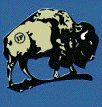Smart Politics Study: Independence Party Need Make No Apologies to the DFL
The DFL has pointed to the Independence Party gubernatorial candidacies of Peter Hutchinson (2006) and Tim Penny (2002) as part of the reason for Republican Tim Pawlenty’s two plurality wins in the Gopher State.
The fear, among the DFL, is that the Independence Party is not so much bringing in new voters, nor tapping the independent wing of the GOP that once split off to vote for the Reform Party (the IP’s ancestor), but rather drawing from the same pool of otherwise like-minded DFL voters.
But a Smart Politics study of nearly 60 Minnesota state House races has found that at the district level, the presence of IP candidates on the ballot is correlated with a stronger performance by the DFL and a weaker performance by the GOP.
Smart Politics examined the 57 House races with Independence Party candidates on the ballot in the 2000, 2004, and 2006 elections and compared the performance of the DFL and GOP in those districts with the previous election cycle (the 2002 election results were omitted from the study due to the redistricting that occurred after the 2000 election).
The first finding is that the Independence Party chose to run in nearly twice as many districts controlled by the DFL (64 percent) than the GOP (36 percent). It would seem, at first blush, that the IP elects to run in DFL territory because it has a greater ideological overlap with liberal voters. In fact, in the 2008 election, the IP will run 9 out of its 10 candidates in DFL-controlled districts.
However, despite the greater presence of the Independence Party in DFL territory, the DFL had a stronger performance (measured by margin of victory) in 58 percent of these districts from the previous election cycle, and in 57 percent of districts overall (after adding in GOP-controlled districts with IP candidates on the ballot).
In only 4 of the 57 districts with IP candidates on the ballot did party control of the district flip from the previous election cycle – and in every instance it was from the GOP to the DFL. All four of these DFL pick-ups occurred in 2004 (Districts 04A, 23A, 26B, and 45A).
Lastly, the DFL enjoyed a net gain (and the GOP a net loss) in each of these 3 election cycles in districts with IP candidates: an average DFL net gain of 0.4 points per district from 2000 to 2002, 3.0 points per district from 2002 to 2004, and 3.6 points per district from 2004 to 2006.
These findings are of course only correlations, but they certainly suggest that a closer look must be given before lackluster DFL performances (in the past or the future) are excused away by putting blame on the Independence Party when it chooses to participate in the Democratic process.

